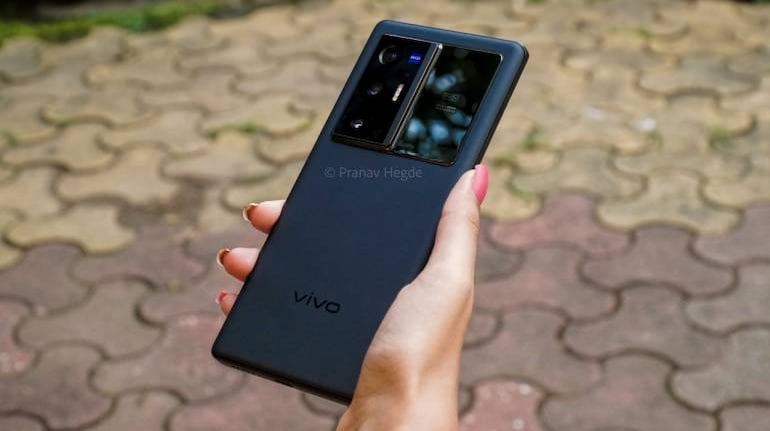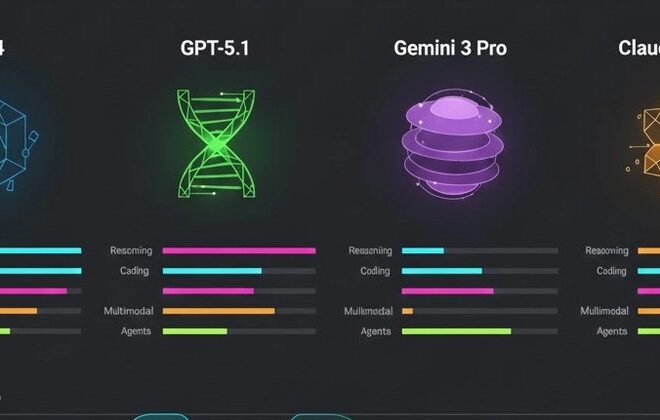
The Android Camera Revolution: How AI and Advanced Sensors Are Redefining Smartphone Photography
For years, the narrative around smartphone cameras was a simple, escalating arms race of megapixels. Every new flagship phone announcement felt like a numbers game, with manufacturers one-upping each other with 48, 64, and even 108-megapixel sensors. While those numbers made for great marketing, they often told an incomplete story. Today, that war is largely over. A new, far more intelligent revolution is underway, one fought not with raw pixel counts but with sophisticated software, advanced optics, and massive sensors. The latest Android News isn’t just about bigger numbers; it’s about smarter pixels.
The modern camera systems in flagship Android Phones are marvels of engineering, blending cutting-edge hardware with the silent, powerful force of artificial intelligence. This shift from a hardware-centric to a software-driven approach, known as computational photography, is fundamentally changing what’s possible with the device in your pocket. It’s the magic that lets you capture a starry night sky with stunning clarity, erase unwanted photobombers with a single tap, and shoot video with a buttery-smooth, cinematic depth of field. This article delves into the incredible advancements in Android camera technology, exploring the hardware renaissance and the AI brain that together are making dedicated cameras a niche product for all but the most demanding professionals.
The Hardware Renaissance: Bigger Sensors, Smarter Lenses
While software is the new king, it still needs a powerful hardware kingdom to rule. In recent years, Android manufacturers have made monumental leaps in the physical components of their camera systems, creating a foundation upon which computational magic can be built. This isn’t just about incremental improvements; it’s a fundamental rethinking of what can be physically squeezed into a device less than a centimeter thick.
The ‘Bigger is Better’ Philosophy: The Rise of 1-Inch Type Sensors
For decades, professional photographers have chanted the mantra: sensor size is king. A larger sensor can capture more light, which directly translates to better image quality, especially in challenging low-light conditions. More light means less noise (that grainy look in dark photos), superior dynamic range (the ability to capture detail in both the brightest highlights and darkest shadows), and a more natural-looking background blur (bokeh). For a long time, the physical constraints of smartphones kept sensors tiny. That barrier has been shattered.
Phones like the Xiaomi 14 Ultra and the Oppo Find X7 Ultra now feature massive 1-inch type sensors, a size once reserved for premium compact cameras. To put this in perspective, the sensor in the Xiaomi 14 Ultra has a surface area nearly four times larger than the main sensor in the iPhone 15. This physical advantage is immediately noticeable. Shots taken in dimly lit restaurants or at dusk retain incredible detail and vibrant color, without the muddy, processed look that plagued older phone cameras. This hardware leap is a recurring highlight in Android News, signaling a clear direction for the future of mobile imaging.
Beyond the Standard Lens: Periscopes, Variables, and Ultra-Wides
The single, fixed lens of early smartphones is a distant memory. Today’s Android Phones are versatile imaging tools equipped with a suite of specialized lenses. The most dramatic innovation has been the periscope telephoto lens. By placing the lens elements sideways within the phone’s body and using a prism to redirect light, manufacturers like Samsung have achieved incredible levels of optical zoom. The Galaxy S24 Ultra, for example, offers a 5x optical zoom lens that, when combined with a larger 50MP sensor and AI processing, delivers sharp, usable photos at 10x and beyond. This technology allows you to capture details on a distant building or get a tight shot of a performer on stage without sacrificing quality—a feat that was pure science fiction for phones just a few years ago.
Furthermore, we’re seeing the re-emergence of variable aperture, a feature once common on dedicated cameras. Devices like the Huawei Pura 70 Ultra and Xiaomi 14 Ultra allow the physical opening of the lens to change (e.g., from f/1.6 to f/4.0). This gives the user creative control, allowing for a wide-open aperture for beautiful portrait blur or a smaller aperture to get more of a landscape in sharp focus. It’s a level of creative flexibility that brings smartphones another step closer to their DSLR counterparts.

The AI Revolution: How Software is Outsmarting Physics
If advanced hardware is the canvas, then computational photography is the artist. This is where the true magic happens. Using the immense processing power of modern chips like Qualcomm’s Snapdragon 8 Gen 3 and Google’s Tensor G3, Android phones capture and process images in ways that would be impossible for a traditional camera. They aren’t just taking a picture; they are constructing it.
HDR+ and Semantic Segmentation: Painting by Numbers
High Dynamic Range (HDR) has been around for a while, but its modern implementation is incredibly sophisticated. Instead of just taking three photos at different exposures and merging them, a modern Android phone will capture a rapid burst of up to a dozen or more frames the instant you press the shutter. The AI then gets to work. It aligns these frames to compensate for handshake, analyzes them for the best data, and intelligently merges them. The result is a single photo with perfectly balanced light, detail in the shadows, and a sky that isn’t a blown-out white mess.
The next level of this is semantic segmentation. The phone’s AI doesn’t just see a collection of pixels; it identifies objects within the scene. It recognizes a face, the sky, a tree, a building, and a plate of food. It then applies tailored, localized adjustments to each element independently. It might increase the saturation of the sky, sharpen the texture of the building, and gently lift the exposure on the person’s face—all within the same image, automatically and in a fraction of a second. This is the secret behind the stunning, “it just works” quality of photos from phones like the Google Pixel 8 Pro.
Night Sight and Astrophotography: Conquering the Dark
Perhaps the most jaw-dropping demonstration of computational photography is its ability to see in the dark. Modes like Night Sight (pioneered by Google) or Samsung’s Nightography have transformed low-light photography. When you activate this mode, the phone takes a series of long-exposure shots over several seconds. The AI then performs a complex dance: it aligns the images to counteract the natural shaking of your hands, identifies and removes noise from each frame, and stacks the clean data to create a final image that is bright, sharp, and detailed—often revealing more than the human eye can see. The Astrophotography mode on Pixel phones takes this to the extreme, using exposures of up to four minutes (with the phone on a tripod) to capture breathtaking images of the stars and the Milky Way.
More Than Just a Snapshot: The Evolving Camera Experience
The advancements in Android camera tech aren’t confined to still images. The entire experience, from shooting video to editing and sharing, has been infused with intelligence and professional-grade features, turning these Android Gadgets into pocket-sized production studios.
Cinematic Video and Pro-Level Controls
The artificial background blur of Portrait Mode has made its way to video. “Cinematic Mode” or “Portrait Video” uses AI to track subjects in real-time, applying a pleasing, shallow depth-of-field effect that mimics the look of a professional cinema camera. The phone can even intelligently shift focus when a new person enters the frame or turns to the camera. Beyond these AI tricks, pro-level features are becoming standard. Many flagship Android Phones now offer 8K video recording, incredible slow-motion at 960 frames per second, and “Pro” or “Expert” modes that provide manual control over focus, ISO, shutter speed, and white balance. Apps like Samsung’s Expert RAW even allow shooting in a flat, LOG color profile, which captures maximum dynamic range and gives creators ultimate flexibility in post-production color grading.
The Magic Eraser: AI-Powered Post-Processing
The AI’s job isn’t done once the photo is taken. One of the most talked-about features in recent Android News has been AI-powered editing. Google’s Magic Eraser and Samsung’s Object Eraser are prime examples. These tools allow you to simply circle an unwanted person or object in your photo, and the phone’s generative AI will remove it and intelligently fill in the background. It analyzes the surrounding textures, patterns, and lighting to create a patch that blends in seamlessly. What once required expert-level skills in Adobe Photoshop can now be done with a simple swipe on your phone. This isn’t just cleaning up a photo; it’s rewriting reality, and it’s a powerful demonstration of how AI is making advanced editing accessible to everyone.
Getting the Most Out of Your Android Camera: Tips and Future Trends
With so much technology packed into your phone, it can be overwhelming. However, understanding these systems can help you take better photos. Here are some best practices and a look at what’s coming next.
Best Practices for the Modern Photographer
-
Trust the AI, But Know When to Override: For 90% of shots, the phone’s auto mode will do a phenomenal job. Let the computational photography work its magic. However, for tricky scenes with complex lighting or fast motion, don’t be afraid to switch to Pro mode. Manually adjusting shutter speed or ISO can give you the creative control the AI might miss.
-
Understand Your Lenses: Get to know your phone’s camera system. Use the ultra-wide lens for sweeping landscapes or tight indoor spaces. Switch to the main 1x lens for general-purpose shots, as it almost always has the best sensor. Use the telephoto lens for portraits (it creates a more flattering perspective) and for capturing distant subjects without losing quality.

Android flagship phone camera system – Vivo X70 Pro+ Review: An Android flagship that’s upping the ante … -
Embrace RAW: If you enjoy editing your photos, shooting in RAW format is a game-changer. A RAW file is like a digital negative; it captures all the unprocessed data from the sensor. This gives you far more flexibility to adjust exposure, colors, and details in an app like Adobe Lightroom or Snapseed compared to a standard JPEG file.
-
Explore the Software Features: Dive into your camera app’s settings. Experiment with Portrait Mode, try out the long-exposure features for light trails, and play with the AI editing tools. These features are designed to be powerful yet user-friendly, and they can unlock a new level of creativity.
What’s Next? The Future of Android Photography
The pace of innovation shows no signs of slowing. We can expect to see even more powerful AI enabling real-time video enhancements that are currently only possible in post-production. Hardware may evolve with technologies like liquid lenses, which could allow for a single lens to smoothly change its focal length, offering seamless optical zoom from wide to telephoto. The line between reality and AI-generated imagery will continue to blur, with software potentially able to enhance or even create elements within a photo to better match the photographer’s intent.
Conclusion: The Smartest Camera is the One in Your Pocket
The evolution of the Android camera is a story of a paradigm shift. The race for megapixels has given way to a more holistic and intelligent pursuit of the perfect image. It’s a symphony of larger sensors, versatile lenses, powerful processors, and, most importantly, incredibly sophisticated AI. The result is that the latest generation of Android Phones are not just phones that take pictures; they are intelligent imaging devices that can overcome physical limitations to produce stunning results in almost any condition.
For consumers, this means the power to capture, edit, and share professional-looking photos and videos is more accessible than ever. The best camera is truly the one you have with you, and thanks to the relentless innovation in the Android ecosystem, that camera is now smarter, more capable, and more creatively liberating than we could have imagined just a few years ago.



